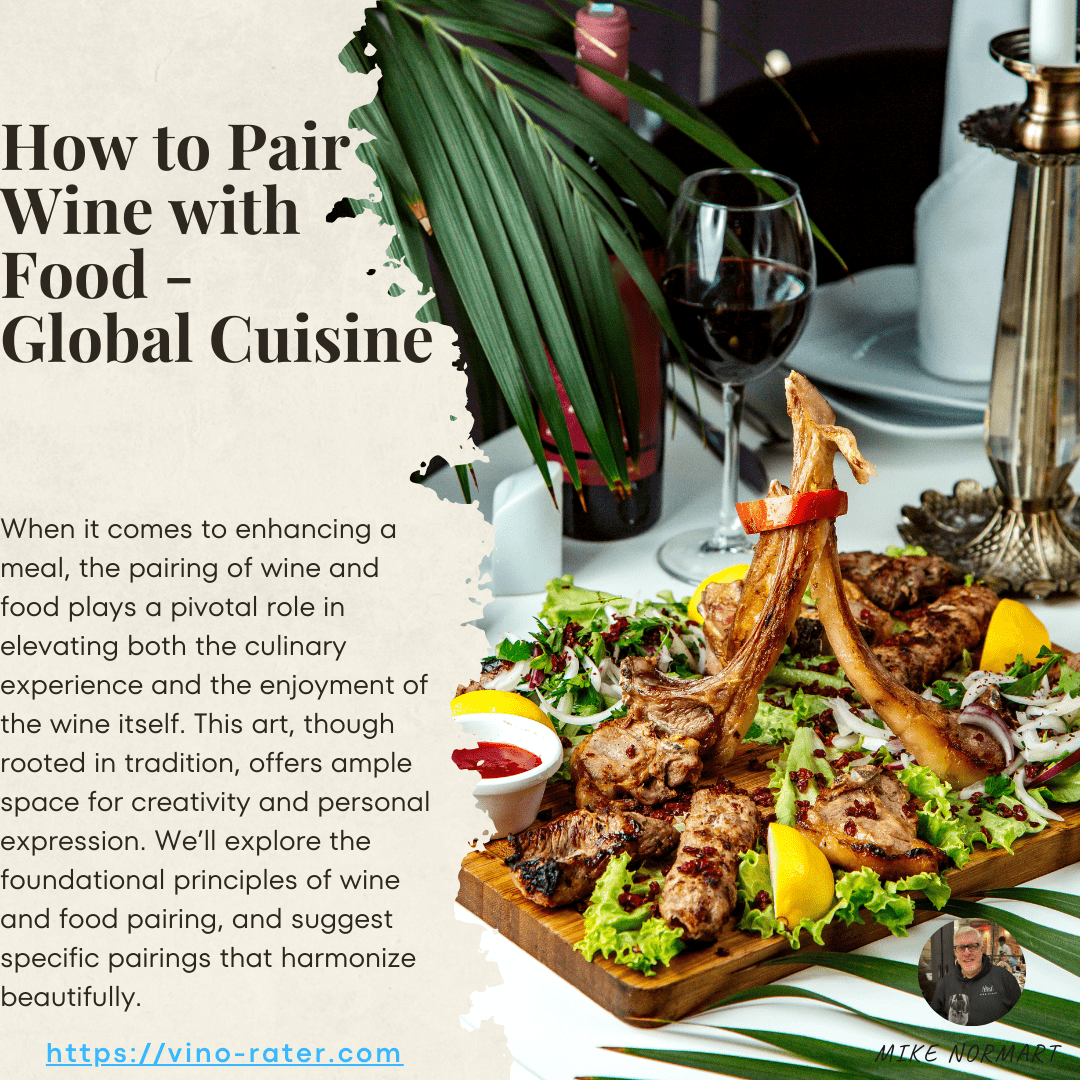How to Pair Wine with Food – Cheese
H o w t o P a i r W i n e w i t h F o o d – C h e e s e
How to Pair Wine with Food – Cheese
How to Pair Wine with Food – Cheese: When it comes to enhancing a meal, the pairing of wine and food plays a pivotal role in elevating both the culinary experience and the enjoyment of the wine itself. This art, though rooted in tradition, offers ample space for creativity and personal expression. For this Master list, first we will explore the foundational principles of wine and food pairing. Then we’ll follow up with a list of Wine and food pairings for the Cheeses, as we did with Meats, Seafood and Global Cuisine.
Foundational Principles of Wine and Food Pairing
Pairing wine with food is not just a matter of taste—it’s about balance, contrast, and enhancement. Here are some key principles to consider:
General Cheese Pairings
Balance in Weight and Intensity: Lighter cheeses like goat cheese and mozzarella pair well with light-bodied wines such as Sauvignon Blanc and Pinot Grigio, while richer, bolder cheeses like Gouda and Cheddar can stand up to medium- to full-bodied wines like Cabernet Sauvignon or Merlot.
Complementary Flavors: Pairing cheeses with wines that share similar flavor profiles can enhance the overall tasting experience. For example, a buttery Chardonnay complements the creaminess of Brie, while a sparkling wine with citrus notes pairs well with fresh goat cheese.
Contrasting Flavors: Opposing flavors can create a pleasant balance. For instance, the acidity in a crisp white wine can cut through the richness of a creamy cheese, refreshing the palate.
Tannins and Fat: Tannic red wines can help balance the fat content in cheeses like Cheddar or Gouda, creating a harmonious pairing.
Acidity: High-acid wines, like Sauvignon Blanc or Pinot Grigio, can complement fresh cheeses such as mozzarella or feta, highlighting their flavors and cleansing the palate.
Regional Pairings: When in doubt, pairing wine and cheese from the same region is a reliable guide. For example, Italian Chianti pairs well with Parmigiano-Reggiano, and French Bordeaux complements French cheeses like Brie or Camembert.
Sweetness: Sweeter wines, such as Moscato d’Asti or Sauternes, can be paired with salty cheeses like blue cheese or Roquefort, creating a beautiful contrast of flavors.
While there are many factors to consider when pairing wine and cheese, personal preferences should also play a role. Experimenting with different combinations can lead to exciting discoveries and unique pairings that suit your individual tastes.
Hard Cheeses
Cheddar:
Cabernet Sauvignon: A full-bodied red wine with rich flavors that can stand up to the sharpness of cheddar.
Chardonnay: A creamy and rich white wine that complements the creaminess of cheddar.
Gouda:
Pinot Noir: A light red wine with subtle fruit flavors that pair well with the smoky and nutty flavors of Gouda.
Riesling: A white wine with a touch of sweetness that enhances the sweetness of Gouda.
Parmigiano-Reggiano:
Cabernet Sauvignon: A bold red wine that complements the nuttiness and richness of Parmigiano-Reggiano.
Sangiovese: An Italian red wine that pairs well with Parmigiano-Reggiano, thanks to its medium body and acidity.
Semi-Hard Cheeses
Asiago:
Merlot: A medium-bodied red wine with soft tannins that pair well with the nutty flavors of Asiago.
Chardonnay: A rich white wine that complements the creaminess of Asiago.
Swiss:
Sauvignon Blanc: A crisp white wine that pairs well with the nutty and savory flavors of Swiss cheese.
Riesling: A white wine with high acidity that can balance the richness of Swiss cheese.
Soft Cheeses
Brie:
Champagne: A sparkling wine with high acidity that cuts through the creaminess of Brie.
Pinot Gris: A medium-bodied white wine with rich fruit flavors that complement the creamy texture of Brie.
Camembert:
Chardonnay: A full-bodied white wine with rich buttery flavors that complement the richness of Camembert.
Pinot Noir: A light red wine with subtle fruit flavors that pair well with Camembert’s earthy flavors.
Goat Cheese:
Sauvignon Blanc: A crisp and refreshing white wine that complements the tanginess of goat cheese.
Blue Cheeses
Gorgonzola:
Cabernet Sauvignon: A bold red wine that can stand up to the strong flavors of Gorgonzola.
Zinfandel: A full-bodied red wine with rich fruit flavors that complement the sharpness of Gorgonzola.
English Blue Stilton Cheese:
Port: A sweet fortified wine that complements the strong, pungent flavor of Blue Stilton.
Late Harvest Riesling: A sweet white wine that balances the saltiness and creaminess of Blue Stilton.
French Roquefort:
Sauternes: A sweet white wine that pairs well with the strong, tangy flavor of Roquefort.
Ruby Port: A fortified wine with rich fruit flavors that complement the sharpness of Roquefort.
Danish Danablu:
Gewürztraminer: A white wine with floral and spicy aromas that complement the creamy texture and tangy flavor of Danablu.
Merlot: A medium-bodied red wine with soft tannins that balance the creaminess of Danablu.
Additional Popular Cheeses
Mozzarella:
Sauvignon Blanc: A light and refreshing white wine that pairs well with the mild flavor of mozzarella.
Pinot Grigio: A crisp and refreshing white wine that complements the light and delicate flavors of mozzarella.
Feta:
Assyrtiko: A Greek white wine with high acidity that pairs well with the tanginess of feta.
Gruyère:
Pinot Noir: A light-bodied red wine with subtle fruit flavors and soft tannins that complement the nutty and complex flavors of Gruyère.
Chardonnay: A full-bodied white wine with rich, buttery flavors that enhance the creaminess of a younger Gruyère cheese.
Monterey Jack:
Pinot Grigio: A light-bodied white wine that pairs well with the mild flavor of Monterey Jack cheese.
Merlot: A medium-bodied red wine with soft tannins that complement the mild flavor of Monterey Jack cheese.
Provolone:
Chianti: An Italian red wine with medium tannins that pairs well with the sharp and tangy flavor of Provolone.
Pinot Grigio: A light-bodied white wine that complements the mild flavor of Provolone cheese.


Grilled Filet Mignon steak

How to Pair Wine with Food – Global Cuisine

